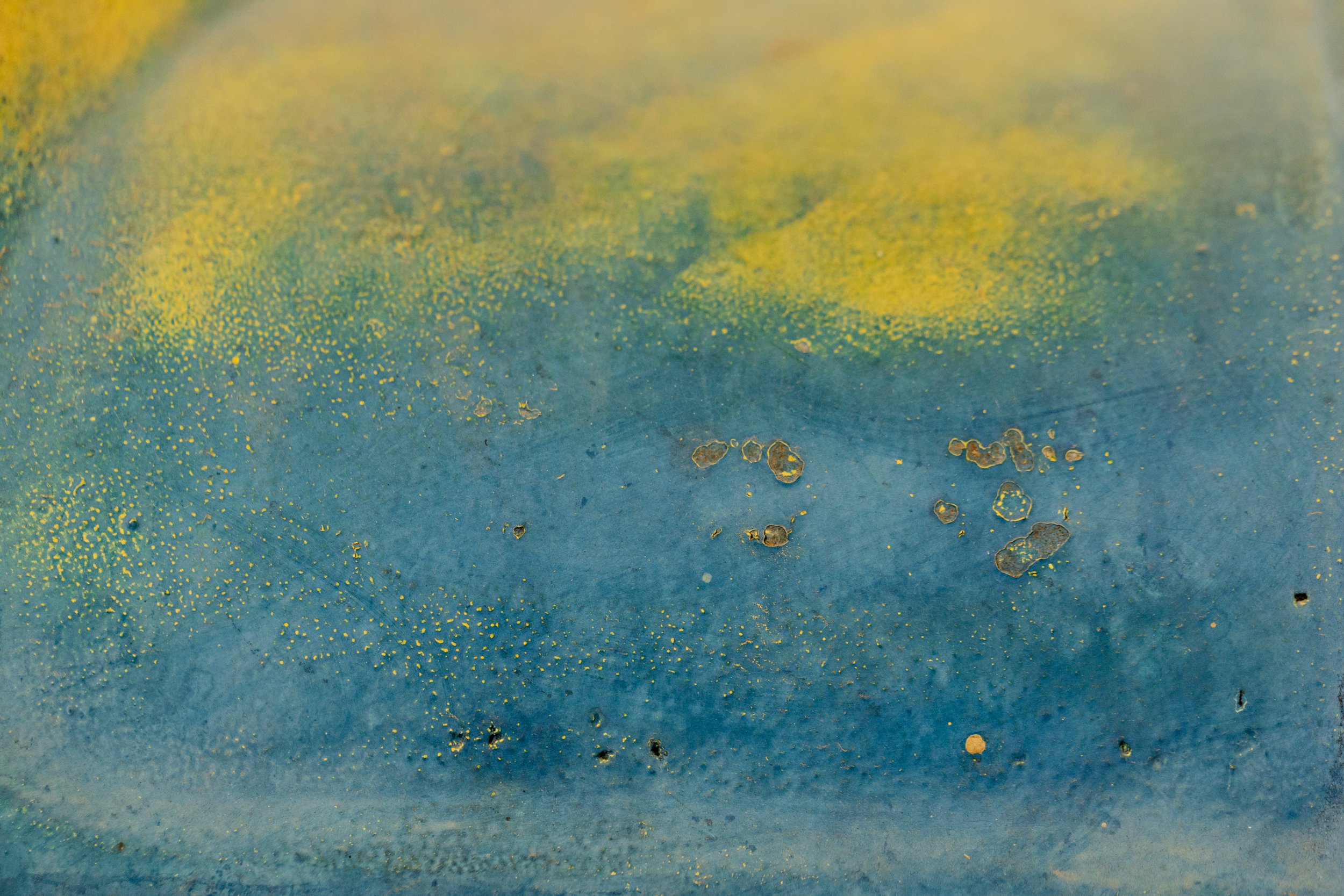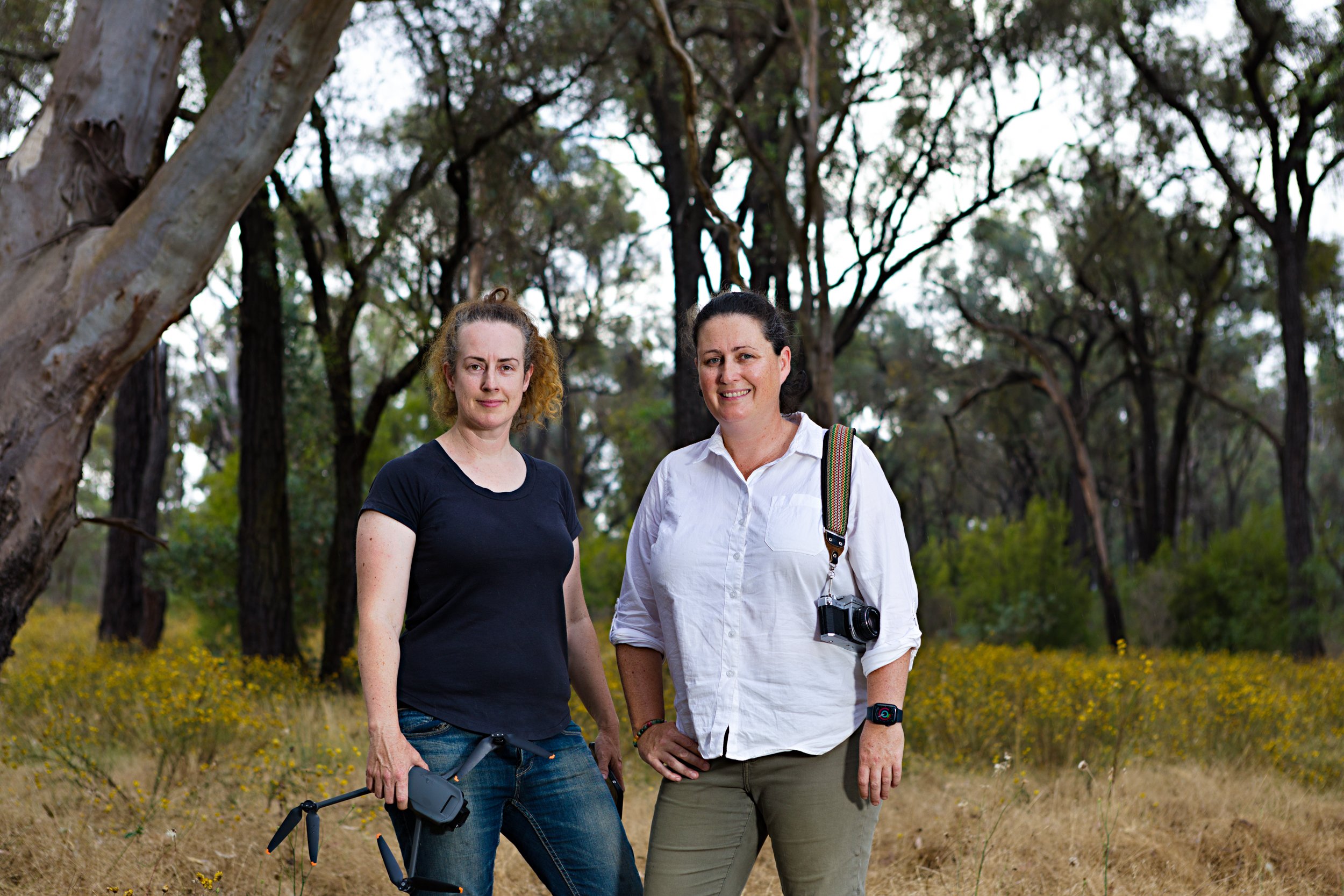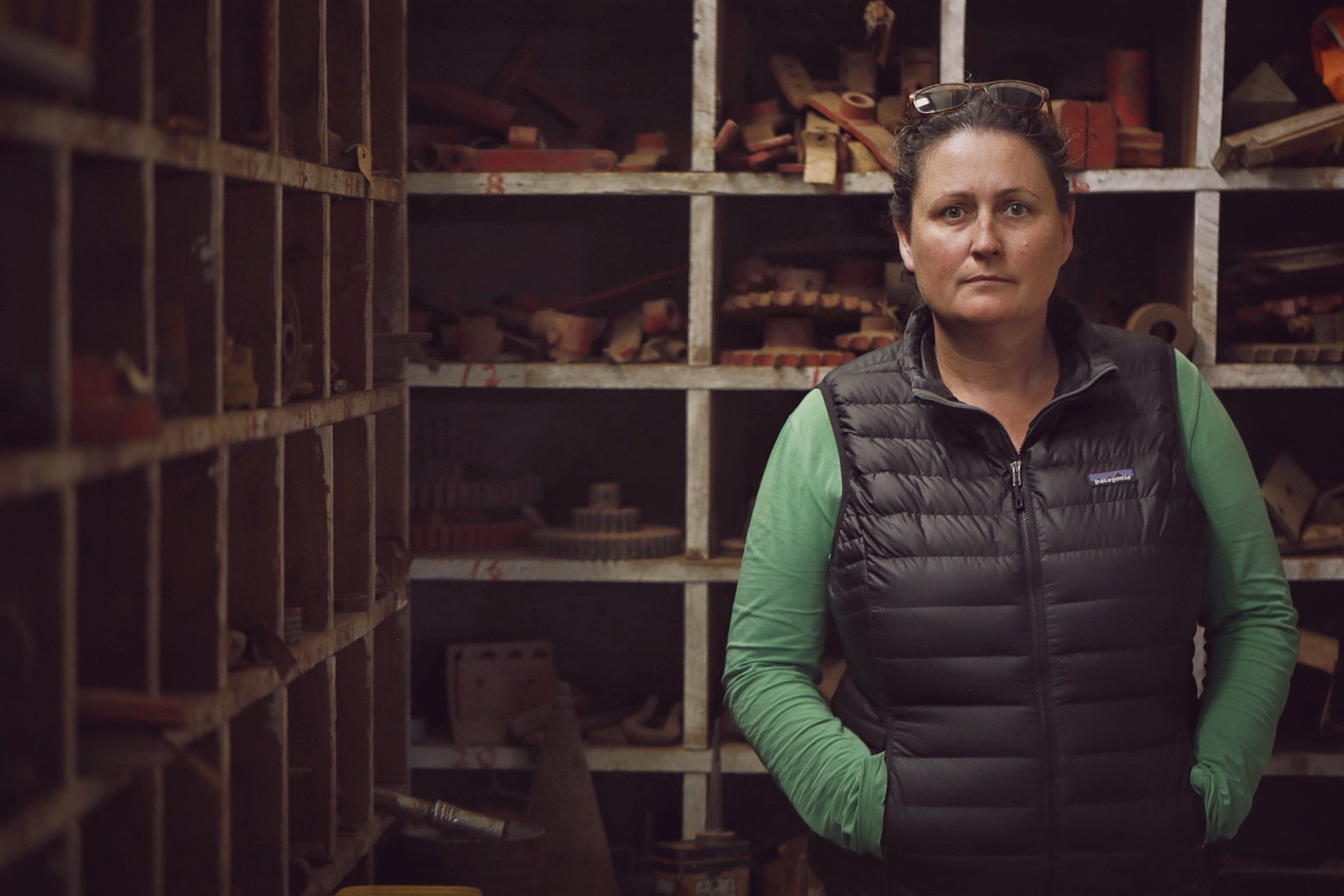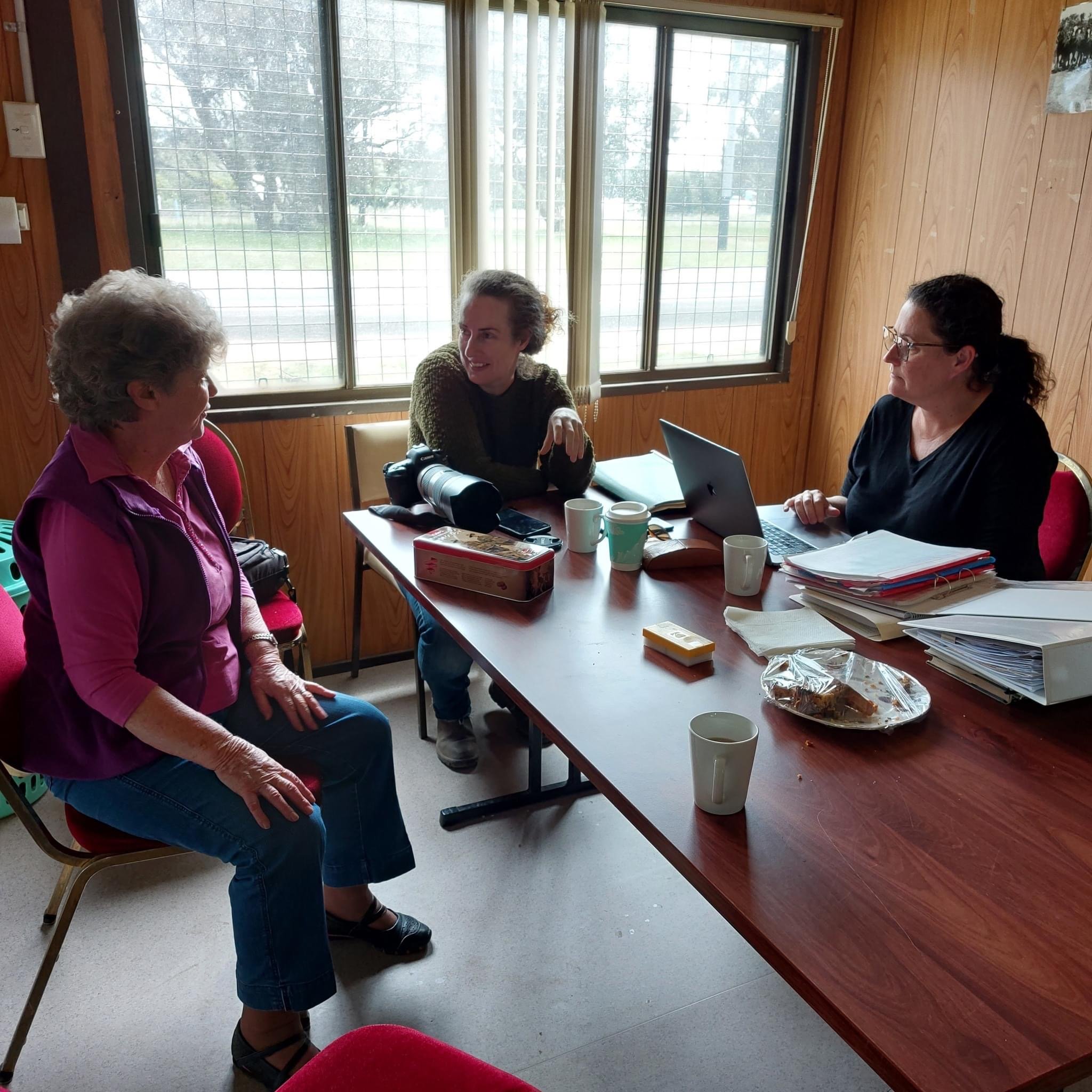enCounters Residency.
Nat Ord + Vanessa Keenan
Field Marshall by Nat Ord + Vanessa Keenan
Digital photograph 2022
In 2022, Nat Ord and Vanessa Keenan were commissioned through the enCounter program to create artworks following a residency in Gilgandra that focussed on the Gilgandra Museum’s collections and stories. The artists undertook the residency in November of that year.
The museum holds an impressive collection that shares the stories and history of the Gilgandra region. Nat and Vanessa have researched a number of stories within the collection in the creation of their works. The artworks created include a video installation featuring aspects of the windmill collection; abstract photography highlighting the textures and patterns of the ageing agricultural equipment; an outdoor ephemeral work about the little-recognised ‘Mother of Gilgandra’ Hannah Morris and a tribute to old cooling technology.
These works aim to introduce new audiences to the museum and uncover stories of the rich cultural heritage of the town. The works introduce familiar subjects and objects such as old tractors and the windmills of Gilgandra and present them in such a way that audiences respond and interpret their history in new ways.
Visitors travelling through will see that Gilgandra is not just another town but has stories and histories that make it unique. Similarly, locals visiting for the first time or revisiting will have an experience that reintroduces them to their own history, providing an opportunity to reflect on what has helped shape their community’s identity.







Preservation 2023
hardwood, chicken wire, acrylic, ply, heat beads and Black Summer charcoal
Nat Ord + Vanessa Keenan
This charcoal ‘esky’ is made from found materials, as would have been common practice when coolers were in popular use. It is inspired by the charcoal kiln and refrigerator in the Gilgandra Museum’s collection.
Charcoal coolers, also known as evaporative coolers or zeer pots, have a long history in many cultures around the world. The basic principle of these coolers is to use evaporative cooling to reduce the temperature of food or other perishable items, thereby extending their shelf life.
The earliest known example of a charcoal cooler dates back to ancient Egypt, where clay pots were filled with water and placed in the shade to keep food cool. Similar techniques were used in other ancient cultures, including Persia and India, where porous clay pots were filled with water and placed in breezy spots to take advantage of evaporative cooling.
In more recent history, charcoal coolers were commonly used in Western society in the 18th and 19th centuries, particularly in rural areas where refrigeration was not available. These early coolers were typically made of wood or metal, and were lined with straw or other insulating materials. Charcoal or sawdust was used to fill the space between the inner and outer layers of the cooler, and water was added to the mix to provide the necessary moisture for evaporative cooling.
Charcoal coolers continued to be used in Western society well into the 20th century, particularly in areas where electricity was not available or where refrigeration was too expensive. However, with the advent of more modern refrigeration technologies, such as the electric refrigerator and the icebox, the use of charcoal coolers gradually declined.
Today, charcoal coolers are still used in many parts of the world, particularly in regions where electricity is scarce or unreliable. In Africa, for example, zeer pots are commonly used to keep food and drinks cool, particularly in rural areas where refrigeration is not available. These coolers are typically made of clay or other porous materials, and are lined with a layer of sand or sawdust to provide insulation. Water is added to the sand or sawdust, and the pot is placed in a shady spot, where it can take advantage of evaporative cooling to keep the contents cool.
Acknowledgements
Fiona MacDonald and the Orana Arts team
Shirley Marks and the Gilgandra Museum volunteers
enCounter is an initiative of Orana Arts through the Volunteers. Artists. Museums. Program (VAMP) project funded by the NSW Government through Create NSW, and supported by South East Arts, Arts Mid North Coast and West Darling Arts, a demonstration of the Regional Arts Development Organisation networking to collaborate and bring creative practitioners together from across the state to work, collaborate and share.


